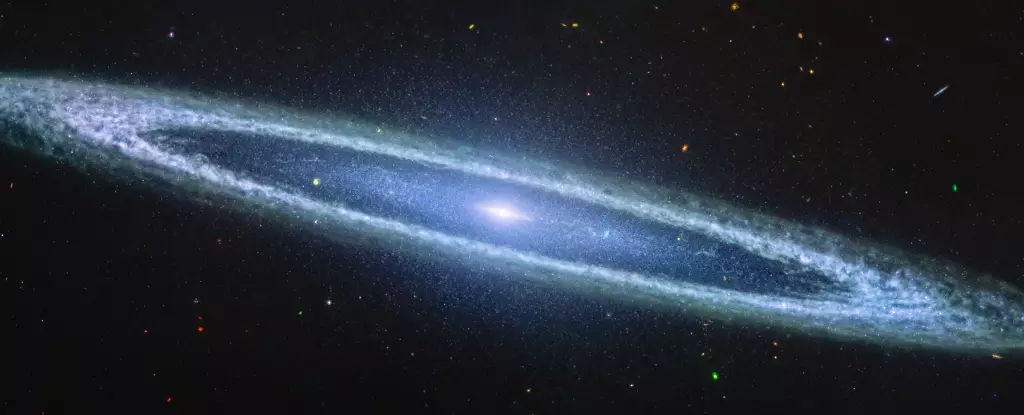Discovered in 1781 by the astronomer Pierre Méchain, NGC 4594 stands out in the cosmic tapestry as one of the more peculiar galaxies identified in our universe. While many galaxies share common traits, NGC 4594, popularly known as the Sombrero Galaxy due to its distinctive ring of dust that encircles its halo, captures attention for both its beauty and complexity. The image of this galaxy taken in 2003 showcased its dusty ring with striking detail, likened to the brim of a large hat. This optical illusion inspires curiosity about the processes taking place within and around this unique structure.
With the advent of advanced space telescopes, our understanding of galaxies like NGC 4594 is evolving. The recent imaging capabilities of the James Webb Space Telescope (JWST) have brought new insights into this galactic marvel, revealing surprises that challenge previously held assumptions about its structure and the phenomena within.
Past observations primarily utilized the Hubble Space Telescope, which, although formidable, is limited by its ability to capture only the optical spectrum. In its images, the thick layer of dust surrounding NGC 4594 concealed potential stellar nurseries, leaving astronomers speculating about the creation of new stars. Furthermore, the intense brightness of the active black hole at the galaxy’s center too often overshadowed other critical details.
In a significant twist, the JWST, employing its Mid-Infrared Instrument (MIRI), uncovered a different reality. This advanced instrument can penetrate deeper through dust, providing a clear window into the heart of the galaxy. The MIRI-generated images illustrate accumulations of warm molecular gas within the dusty ring but surprisingly indicate a marked absence of young stars. This revelation raises questions about the effectiveness of the dust ring as a breeding ground for stellar formation, suggesting that it might not significantly contribute to the genesis of new stars after all.
Delving further into the structural nuances of NGC 4594, the JWST provides insights into the central area where the supermassive black hole resides. Contrary to the expectations of a sprawling halo of stars typically seen around such black holes, what emerges is a rather flat disk configuration. This structure prompts a reevaluation of the galactic bulges we typically observe in similar galaxies. Interestingly, while the central black hole remains active, it possesses a lower luminosity compared to its more energetic counterparts. This suggests it has a distinct and less aggressive behavior in comparison to other black holes producing powerful jets of plasma.
This unexpected finding underlines the Sombrero Galaxy’s uniqueness within the cosmic landscape, prompting astronomers to question existing paradigms of black hole dynamics and their surrounding environments. The implications extend beyond just NGC 4594; they influence our broader understanding of galactic formation and the variety of behaviors seen in supermassive black holes across the universe.
The JWST’s initial observations of the Sombrero Galaxy open a portal to further exploration. With approximately 2,000 globular clusters identified within its borders—a number notably high for a galaxy of its scale—scientists are set to deepen their investigations into what makes this galaxy so distinctive. The presence of these clusters may illuminate the evolution of NGC 4594 and its divergence from other galaxies in our universe.
Future studies may hold significant promise, as astronomers continue to pore over the data collected by the JWST. It is crucial for the scientific community to assess the findings so far and integrate this newfound knowledge into the existing framework of galactic understanding.
The fresh perspectives gleaned from recent observations mark a pivotal shift in our comprehension of NGC 4594. Its surprises and peculiarities not only enrich our knowledge of this specific galaxy but also challenge and refine the broader cosmic narrative. As we continue to unveil the mysteries held within the cosmos, NGC 4594 reminds us of the intricacies and unexpected revelations that lie beyond, waiting to be discovered.

